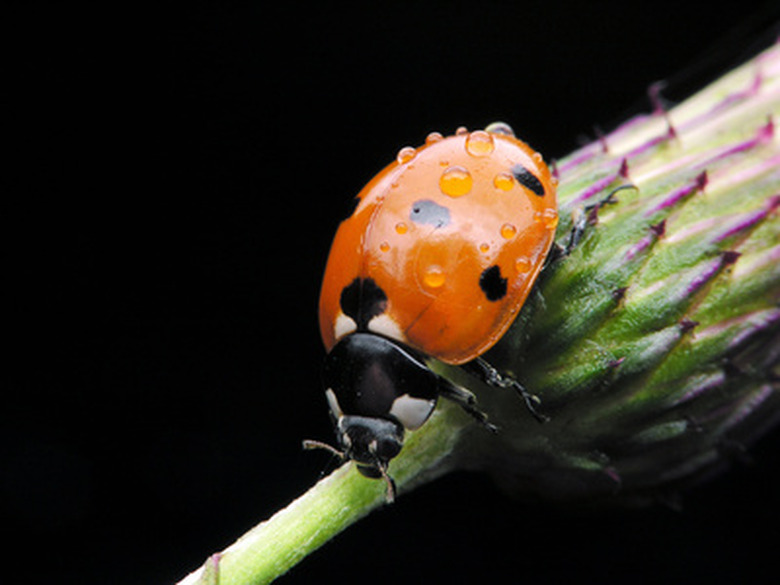What Are The Benefits Of Ladybugs?
Ladybugs, also known as ladybirds or coccinellids, are small beetles approximately 1/4-inch in length with dark orange hard shells covered in black dots. These beetles can show up in large numbers in some areas and will occasionally attempt to move indoors to cause a nuisance in the home, but overall these are bugs you want to have around because of their benefits.
Reduce Insect Population
Ladybugs are predatory beetles that eat a large number of aphids (plant lice) and other harmful bugs. Even in the larval stage, ladybugs will normally consume hundreds of aphids and will grow into adults that may eat up to 5,000 aphids in a lifetime. This greatly reduces the population of harmful insects that will otherwise destroy your plants.
Eliminate Harmful Pesticides
Because ladybugs eat many of the insects that cause damage to garden plants, a good population of the beetles will prevent the need for harmful pesticides. Getting ladybugs to populate your garden may be the tricky part. Products like Wheast (a mixture of wheat and yeast) can be sprayed safely on plants and will attract ladybugs. In addition, planting flowers like angelica and dill and allowing the growth of dandelions in the garden will also promote ladybug populations.
- Ladybugs, also known as ladybirds or coccinellids, are small beetles approximately 1/4-inch in length with dark orange hard shells covered in black dots.
- Because ladybugs eat many of the insects that cause damage to garden plants, a good population of the beetles will prevent the need for harmful pesticides.
Beautify The Garden
One of the most endearing qualities of a ladybug is its appearance. The deep orange to red shell with black dots, tiny black heads and wiry antennae make this beetle look like a piece of art. Ladybugs are among the best-dressed bugs in the garden. While having slugs drag slime across the garden floor may be a bit disgusting, having ladybugs crawl across the leaves of your roses or lilies just adds to the visual appeal.
Ladybugs & Roses
IPM techniques aim to eliminate or limit pest damage through preventative ecosystem management. The gardener considers environmental factors that lead to pest infestation and seeks a combination of controls for effective long-term success. Biological controls, including a healthy population of ladybugs, are essential for naturally controlling aphids, spider mites, whiteflies and scale insects, including rose scale. Provide a healthy environment for both roses and ladybugs. According to a 2011 University of California report, more than 3,000 ladybugs, released over time, were required for the successful treatment of just one aphid-infested rosebush. The natural population of predator ladybugs in such a garden contributes to its health.
- One of the most endearing qualities of a ladybug is its appearance.
- The natural population of predator ladybugs in such a garden contributes to its health.
References
- Integrated Pest Management University of California Davis: How to Manage Pests: Pest Management and Identification
- Integrated Pest Management University of California Davis: What is Integrated Pest Management (IPM)?
- Sunset Western Garden Book; Kathleen Norris Brenzel, et al.
- Marin Rose Society: Rx For Healthy Roses – Wrapping it Up
- Integrated Pest Management University of California Davis: Lady Beetle Releases for Aphid Control: How to Help Them Work
- Capitol District Community Gardens: Beneficial Insects
- American Rose Society: Integrated Pest Management –What Is It?
- Clemson Cooperative Extension: Rose Insects & Related Pests
